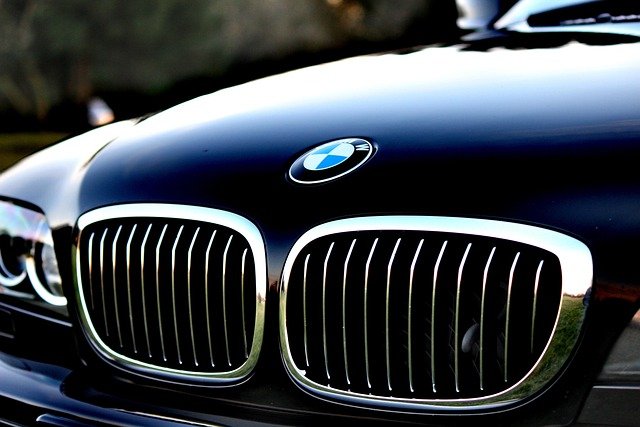BMW uniques come out of storage to commemorate thirty years of M3s
The BMW M3 was introduced in Germany eight years earlier, in 1986, even though it wasn’t brought to Australia until 1994 with the release of the E36 model.
The original M3, which was created by the BMW Motorsport Division with Group A German Touring Car Championship racing in mind, sounded somewhat tamer with a 147kW 16-valve 2.3-liter version of the regular 2.0-liter four-cylinder and a body trimmed as much as was practical of excess fat. However, Australia saw its first M3 in 1994 as a 3.0-liter 210kW six-cylinder two-door coupe.

Subsequently, in 1988, an Evo variant was released, resulting in an increase in power to 164kW. In 1990, the M3 Sport Evolution model was introduced, including a larger 2.5-liter engine that produced 177kW. There were barely 600 automobiles produced.
In 1992, BMW introduced a 3.0-liter, six-cylinder engine with 210kW/320Nm, shifting the emphasis from the racetrack to the road. This marked the transition from four to six cylinders. Even so, at the time, the engine claimed the most specific torque and maximum output per liter of any naturally aspirated volume production engine. It also featured BMW’s VANOS variable valve timing technology.
In 1995 (or 1996 in Australia), the delightfully noisy inline six was upgraded to 3.2 liters, and Double VANOS valve timing helped increase the power to 236 kW. The M3 was the first production vehicle to come with an automatic manual gearbox in 1996.
BMW unveiled the third generation M3 in 2000 (2001 in Australia), using a newly built 3.2-liter six-cylinder engine that produced 252kW/365Nm.
In terms of engine, the M3 took a completely different turn in 2007 when it embraced BMW’s new 4.0-liter naturally aspirated V8, which increased output even more to 309kW. It also used a front suspension made almost entirely of aluminum and a carbon fiber roof, taking weight reduction techniques one step further.
Then, in 2014, BMW completely changed the design of its V8 M3, going back to an inline 3.0-liter six-cylinder engine but deviating from the original plan by including turbocharging and increasing output to 317kW. The introduction of a limited edition 30 Jahre M3 Competition Package variant, which generates 331kW, has contributed to this.
In order to offer more detail to the M3’s history, the firm is getting ready to pull four prototypes out of storage as the vehicle marks its 30th anniversary.
The improbable M3 variations were created as either whimsical exercises wondering what may have been or for use only as hi-po workhorses with the heart of an M3, within the limits of BMW’s operations, rather than for regular production.
Which would be great, except that none are anticipated to arrive in Australia.
1986 BMW M3 Pickup
BMW’s Motorsport division developed an M3 ute on a one-off basis utilizing a convertible body as the base, addressing their requirement for a convenient vehicle to move components around their facilities near Munich.
The crew started building the workhorse M3 with a 2.0-liter, 143kW engine since the bracing needed for the topless convertible body made a decent starting point for a ute. Eventually, they swapped to the right 2.3-liter engine.
It is noteworthy that the M3 ute remained operational for almost 26 years prior to its retirement in 2012.

BMW M3 Compact (1996-
The M3 Compact, which weighed just 1.3 tons and had a powerful 239kW, was widely regarded as the forerunner to the present M2. When tested in 1996, German automotive journal Auto Motor Und Sport called it “even more uncompromising” than the standard M3.
2000 BMW M3 Touring
The M3 Touring, a prototype that was made available for journalists to drive, was developed in 2000 as a result of the concept for a wagon version of the M3 that originated in the late 1990s.
“This prototype allowed us to show that it was possible to integrate an M3 Touring into the ongoing production of the standard BMW 3 Series Touring with very little difficulty—at least from a purely technical standpoint,” stated Jakob Polschak, who has worked for BMW M Division for more than 40 years and is head of vehicle prototype building and workshops.
“One important thing we needed to demonstrate was that the rear doors of the standard production model could be reworked to adapt them to the rear wheel arches without the need for new and expensive tools.”
The M3 Touring, of course, never survived beyond the flight of imagination.
2011 BMW M3 Pickup
When the Motorsport team began looking at creating a unique M3 ute to replace the 1986 model that was discontinued, BMW had a little fun.
On April 1, 2011, a press statement was released by BMW indicating that the company was considering producing an M3 ute in large quantities. Additionally, plans were made to distribute “spy” images of the circuit’s calibration runs at the Nurburgring Nordschleife. The M3 ute was a one-of-a-kind vehicle that was created, much like the original, for usage solely on BMW’s grounds. However, this time it was officially registered for on-road use, as was disclosed later in the press release.